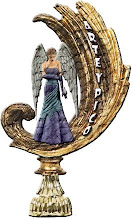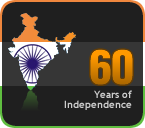The wedding date having been decided, all near and dear ones were informed by word of mouth, or by a short letter. A week before the wedding a small function ‘kaal nattal’ would be held. A pooja would be performed by the bride’s father, under the guidance of the family priest, invoking the gods’ blessings.
After the pooja the first pole of the pandal (marquee) was fixed in the ground - this was the 'kaal nattal'. The pandal, a bamboo structure with a thatched roof would be put up on the street in front of the bride’s house and adjoining houses. The streets of the Brahmin settlements (agraharam) contained houses like the row houses of today one touching the other. The inside of the pandal was decorated with all sorts of festoons, shining globules of different sizes, and paper garlands of various colours. At the entrance of the pandal two full grown banana plants heavy with fully developed fruits, were fixed, as a sign of auspiciousness. A special manamedai, a place for the bridal couple to sit and perform the wedding rites, conducted by the family priest, was also made ready, decorated with kolams. On this day, the bride would also have the 'kappu kattal' ceremony - a sacred yellow thread was tied round on her right wrist after invoking the blessings of all the gods.
Once the 'kaal naattal' was done, the preparation for the wedding also started. Relations came one by one. They along with the neighbours took charge of the preparations, without being told or asked. Someone getting groceries and vegetables from the market, another arranging for fresh milk to be delivered twice daily for the duration of the wedding period, another arranging for the curds to be delivered every evening in mud pots. Banana fruits, a must for every meal of the wedding feasts were bought in bunches and hung from the ceiling. And not to forget banana leaves, bunches and bunches of them.
 This takes me to my own wedding and my two Chithappas when they came to attend it. After teasing me for some time and saluting my parents , they went for the heavy stack of banana leaves, cutting them to the needed sizes for the various meals of breakfast, lunch, and tiffin, arranging them according to size and rolling them up in gunny bags, so that they remained fresh for a few days.
This takes me to my own wedding and my two Chithappas when they came to attend it. After teasing me for some time and saluting my parents , they went for the heavy stack of banana leaves, cutting them to the needed sizes for the various meals of breakfast, lunch, and tiffin, arranging them according to size and rolling them up in gunny bags, so that they remained fresh for a few days. Another item to be readied was the thamboolam – plates of betel leaves, betel nuts made into edible kalipaakku, chunambu for the women folk For the men it was betel leaves, raw, whole betel nuts (adakkai) chunnambu and tobacco. These were offered to the bridegroom’s people with respectful requests to partake of them. In today’s world, these are unimportant details, but in weddings of those days, any shortcoming in this was enough to upset an elderly aunt or a bachelor uncle to create a misunderstanding and unpleasantness during the wedding. In 1960, not so ancient, I have myself witnessed two elderly uncles of the bridegroom, getting angry and creating a scene because the bride’s people had started having lunch before they had theirs.
Another item to be readied was the thamboolam – plates of betel leaves, betel nuts made into edible kalipaakku, chunambu for the women folk For the men it was betel leaves, raw, whole betel nuts (adakkai) chunnambu and tobacco. These were offered to the bridegroom’s people with respectful requests to partake of them. In today’s world, these are unimportant details, but in weddings of those days, any shortcoming in this was enough to upset an elderly aunt or a bachelor uncle to create a misunderstanding and unpleasantness during the wedding. In 1960, not so ancient, I have myself witnessed two elderly uncles of the bridegroom, getting angry and creating a scene because the bride’s people had started having lunch before they had theirs. There were other preparations to be done. The womenfolk, relatives as well as neighbours, took charge of the kitchen – cooking, grinding, pounding and making sweets and savouries for ‘seeru’ - that is the eatables given to the sammandhis (bridegroom’s family) to take home for themselves and to be distributed, if they wished. The women folk were adept a making murukku, each one 10 to 12 inches in diameter. Appam , adhirasam and monaharam , the sweets were made with jaggery. Of course a professional cook was appointed to cook for the actual wedding days. Big ‘vaarppu, ‘uruli’, big enough to cook for more than 200 people were borrowed from temples. Every household had its own 'uruli', 'varppu', bell metal pots and pans , large enough to cook for fifty. These items were a must to be given to the bride by her parents at the time of marriage. I was also given such big vessels by my parents.
There were other preparations to be done. The womenfolk, relatives as well as neighbours, took charge of the kitchen – cooking, grinding, pounding and making sweets and savouries for ‘seeru’ - that is the eatables given to the sammandhis (bridegroom’s family) to take home for themselves and to be distributed, if they wished. The women folk were adept a making murukku, each one 10 to 12 inches in diameter. Appam , adhirasam and monaharam , the sweets were made with jaggery. Of course a professional cook was appointed to cook for the actual wedding days. Big ‘vaarppu, ‘uruli’, big enough to cook for more than 200 people were borrowed from temples. Every household had its own 'uruli', 'varppu', bell metal pots and pans , large enough to cook for fifty. These items were a must to be given to the bride by her parents at the time of marriage. I was also given such big vessels by my parents.In today’s weddings, maximum money is spent on silk sarees and gold jewellery. A hundred years ago, it was not so. For the bride the nine yards koorai pudavai was the only item generally, and a couple more nine yard sarees. And for the bridegroom a couple of set of cotton dhothi and angavastharam (small dhoti for the upper body), then known as ‘patharu’, as well as a silk set.

The cost of the ornaments was borne by both sets of parents. These were usually an addigai,(choker necklace) a double stranded gold chain, two pairs of bangles, and a pair of earrings.* The most important of these was the thirumangalyam, which was strung on a manjal saradu – thick strand of cotton fibres, dipped in turmeric. In those days there were no jewellery shops. The goldsmith was asked to come home at an auspicious day and time and gold was handed over to him to make the thirumangalyam and other ornaments.
Our own goldsmith Anantham would be sent for whenever required. He was very honest and trustworthy and good in his work. When my mother asked him once for a silver key ring for herself, he did not take any money for it. Also when my mother got a silver toothpick for my father, he refused to take any money An interesting object in silver he made for my mother .was a pair of silver plavila -jackfruit tree leaves shaped into a spoon pinned by a small stick. This was for us to take kanji (gruel) with when we children used to be ill.
Nowadays the mandapams and caterers take care of all these arrangements. In the beginning when the mandapams were a novelty, all the arrangements, even the caterer had to be fixed by the people concerned. In 1967 when my eldest daughter Raji got married in a kalyana mandapam in Madras, Babuji’s uncle and aunt were there to make all the arrangements. In 1977 our son Bala’s wedding also took place in Madras in a kalyana mandapam. We had an easy time for we were the bridegroom’s party!
Our younger daughter Viji and Gowri got married in Delhi in 1974 and 1986. Though there were one or two kalyana mandapams in Delhi at that time, we had the wedding conducted near our own home under a shamiana put up in a vacant plot of garden.
Back to the old days. The bride’s family would make all the above arrangements and wait for the bridegroom’s party to arrive.
 *Diamond earrings came into vogue only in the 1930s. They were not brought ready made. Stones were ordered from dealers and tested and certified by experts. Whenever diamonds were brought at home, my father would have them sent to Professor Sivaramakrishna Iyer, an expert in diamonds, for approval. Anantham, the thattan, would come, and was shown the stones and asked to make the gold setting. Within a week he would be home, with the required gold setting, which looked nothing like gold or an earring setting. The diamonds would be handed over to him one by one for settings by my grandmother, who would watch over him like a hawk, till the 14 stones were set. And as if by magic, after removing the setting from the wax base, and cleaning and polishing, the shining and shimmering thodu were ready.
*Diamond earrings came into vogue only in the 1930s. They were not brought ready made. Stones were ordered from dealers and tested and certified by experts. Whenever diamonds were brought at home, my father would have them sent to Professor Sivaramakrishna Iyer, an expert in diamonds, for approval. Anantham, the thattan, would come, and was shown the stones and asked to make the gold setting. Within a week he would be home, with the required gold setting, which looked nothing like gold or an earring setting. The diamonds would be handed over to him one by one for settings by my grandmother, who would watch over him like a hawk, till the 14 stones were set. And as if by magic, after removing the setting from the wax base, and cleaning and polishing, the shining and shimmering thodu were ready.And the cost? Just Rs. 500/. But it is wrong to say Rs. 500, because Rs. 500 was a very big amount those days.
More to come
Photo of Murukku: courtesy http://www.flickr.com/photos/godakshin/
Photo of a meal on a banana leaf: courtesy http://www.myrelish.com/







